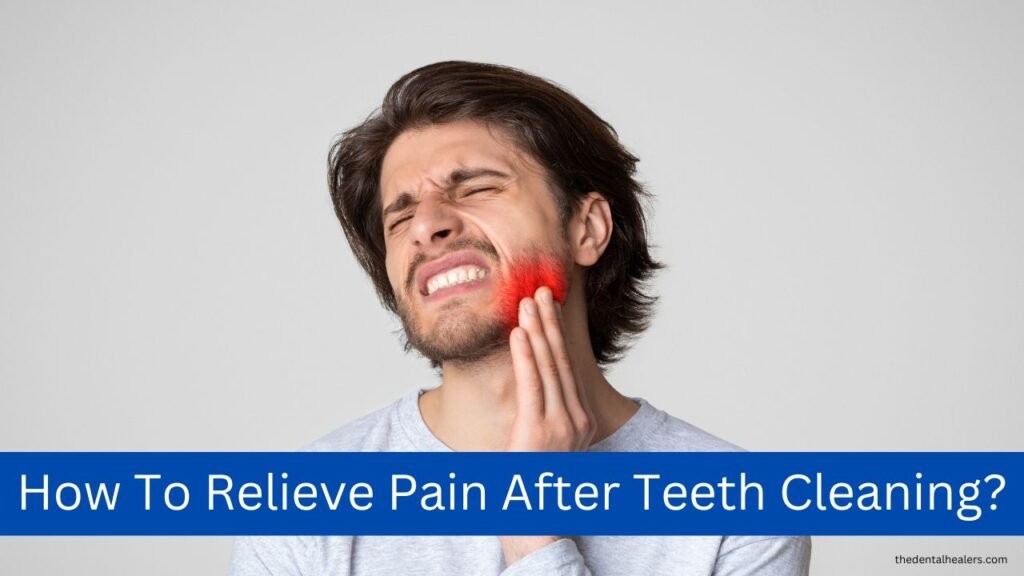Key Takeaways
- Pain after teeth cleaning is common and typically resolves within a few days.
- Causes may include gum inflammation, exposed tooth roots, or irritation from the cleaning process.
- Over-the-counter pain relievers such as NSAIDs (like ibuprofen) or acetaminophen are effective for managing discomfort (consult a doctor or pharmacist for recommended dosage).
- Using a toothpaste formulated for sensitive teeth can provide additional relief.
- Applying a cold compress or, alternatively, a warm compress can provide relief (cold compress for swelling, warm compress for pain).
- Avoiding hot and cold foods or drinks can prevent sensitivity.
- Maintaining good oral hygiene can minimize discomfort and promote healing.
Understanding Pain After Teeth Cleaning

Getting your teeth professionally cleaned is essential for maintaining good oral health, but it’s common to experience some discomfort afterward. This discomfort can arise due to various factors, including gum inflammation from deep cleaning, temporary sensitivity of exposed tooth roots, or minor irritation caused by the cleaning instruments.
Effective Pain Relief Options
1. Pain Relievers: Over-the-counter medications such as NSAIDs (nonsteroidal anti-inflammatory drugs) or acetaminophen are commonly used to manage post-cleaning discomfort.
NSAIDs like ibuprofen not only reduce pain but also help alleviate inflammation in the gums. Acetaminophen primarily targets pain relief. It’s crucial to consult with a healthcare professional or pharmacist to determine the appropriate dosage based on your individual health needs.
2. Toothpaste for Sensitive Teeth: Using a toothpaste specifically formulated for sensitive teeth can provide added relief.
These toothpastes typically contain ingredients that block pain signals to the nerve of the tooth, reducing sensitivity and discomfort.
3. Cold Compress or Warm Compress: Applying a cold compress can help reduce swelling and numb the area, providing immediate relief from discomfort.
Alternatively, some individuals find relief with a warm compress, which can be more effective in soothing pain rather than reducing inflammation. Use a cold compress for swelling and a warm compress for pain relief.
See also: How much to pay for Teeth Cleaning
Precautions and Tips
Avoid Extreme Temperatures: After a teeth cleaning, your teeth and gums may be sensitive to hot and cold foods or beverages. Opt for lukewarm or room temperature options to minimize discomfort and prevent irritation.
Maintain Good Oral Hygiene: Practicing good oral hygiene is essential for reducing discomfort and promoting healing. Brush your teeth gently with a soft-bristled toothbrush and fluoride toothpaste formulated for sensitive teeth twice a day. Floss regularly, being careful around sensitive areas to avoid irritation. Using an antiseptic mouthwash can also help prevent infection and reduce inflammation.
FAQs About Pain After Teeth Cleaning
Q: How long does the pain last after teeth cleaning?
A: Typically, any discomfort after teeth cleaning subsides within a few days. If pain persists or becomes severe, consult your dentist for further evaluation.
Q: Can I eat after teeth cleaning?
A: Yes, you can eat after teeth cleaning. However, it’s advisable to avoid very hot or cold foods and beverages to prevent sensitivity and further irritation to your gums.
Q: Can I brush my teeth after teeth cleaning?
A: Yes, maintaining regular oral hygiene by brushing and flossing is important after teeth cleaning. Use gentle strokes and a soft-bristled toothbrush to avoid aggravating sensitive areas.
Conclusion
Experiencing some discomfort after a dental cleaning is normal and usually temporary. By following these tips and using effective pain relief methods, you can manage discomfort effectively and support the healing process.
Remember, if you have concerns or if pain persists beyond a few days, don’t hesitate to reach out to your dentist for personalized advice and treatment.
Resources
- WebMD: Managing Tooth Pain
- Mayo Clinic: Toothache
Disclaimer: The content of this article is for informational purposes only and does not constitute medical advice. Please consult with a dental professional for personalized guidance and treatment.
Find Your Perfect Dentist
Easily book appointments with top-rated dentists in your area
Need Emergency Dental Care?
Get immediate help from verified dental professionals